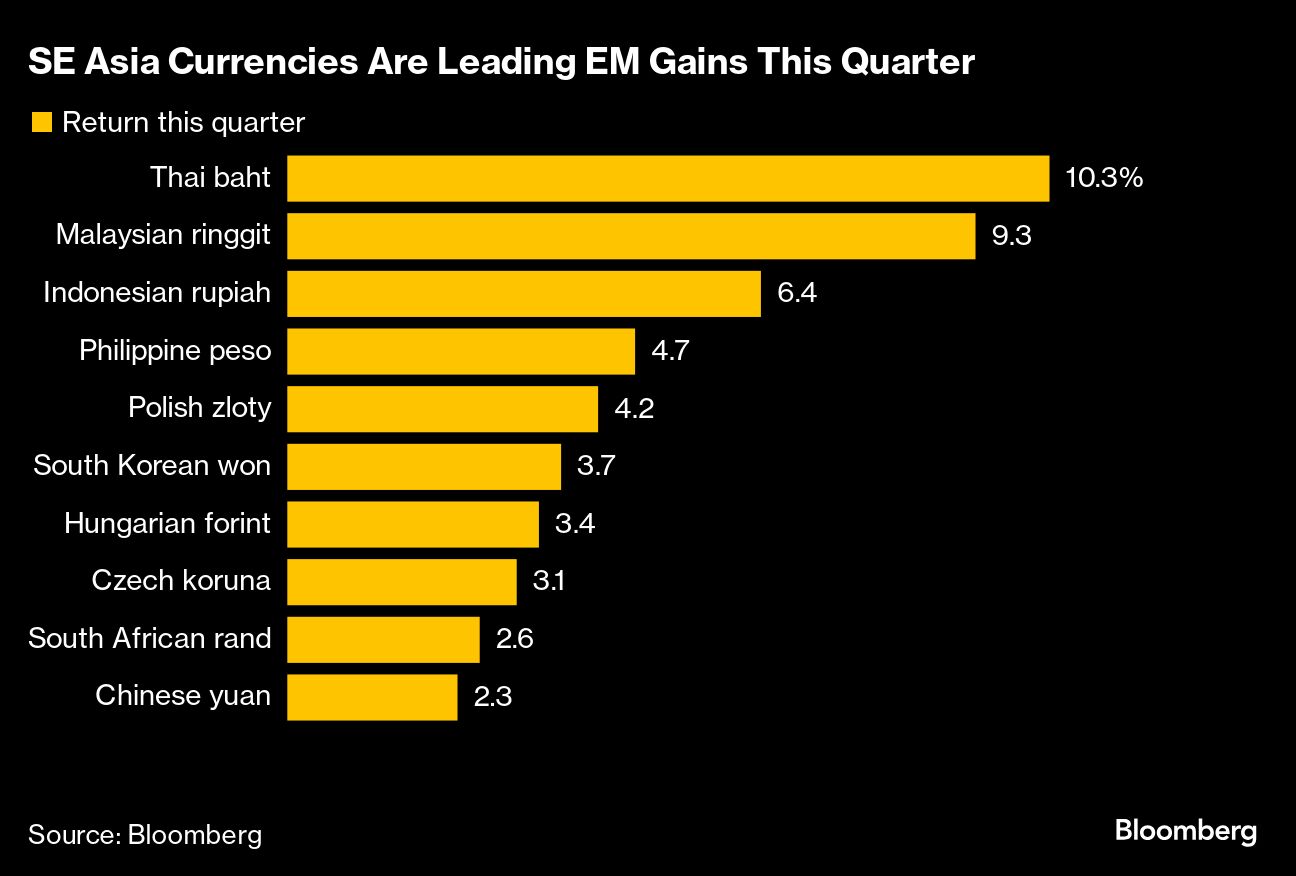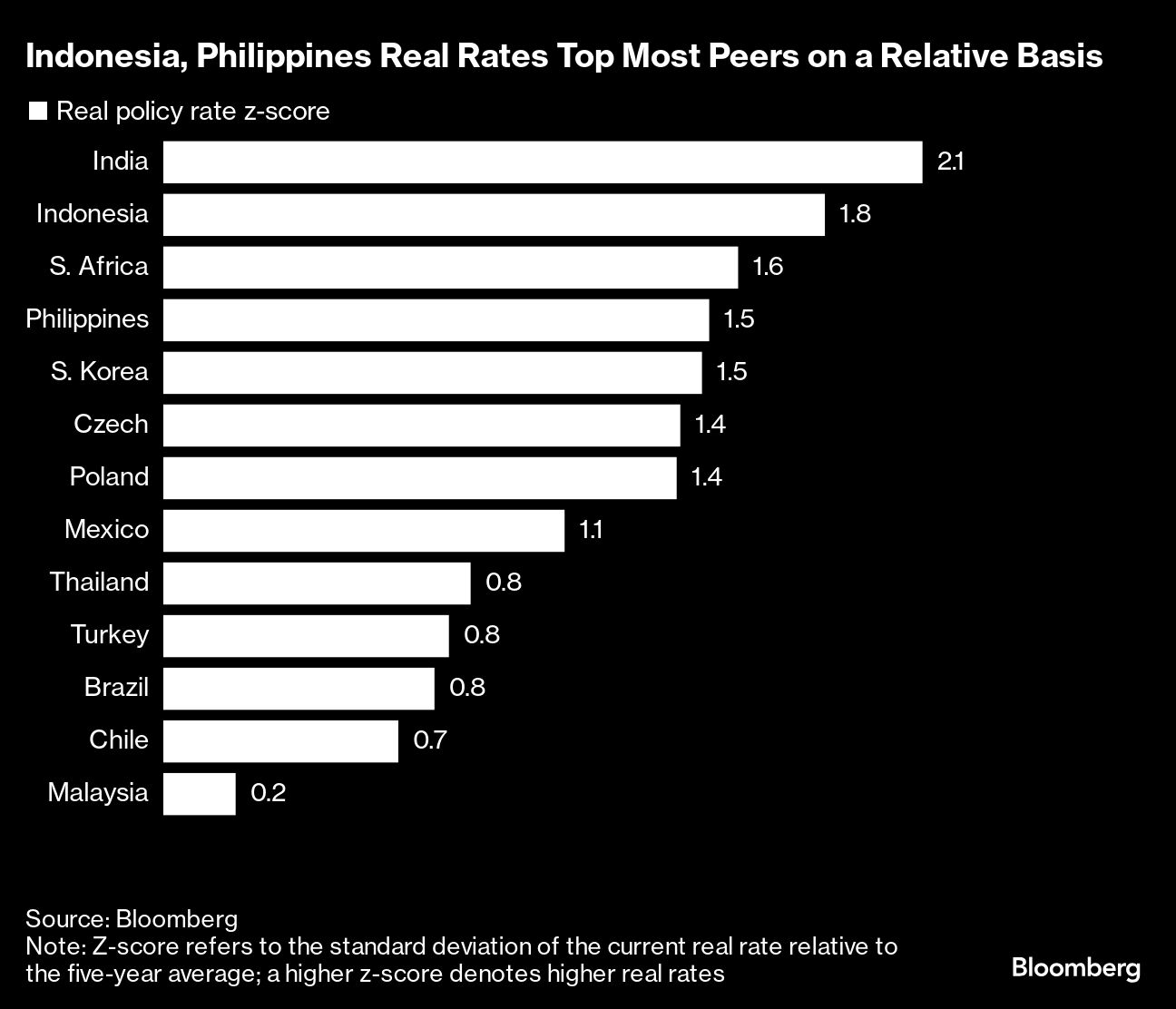
KUALA LUMPUR (Sept 15): Global funds are snapping up Southeast Asian assets, as the prospect of interest-rate cuts and attractive valuations holds out the promise of supersized returns.
Money managers have boosted positions in sovereign bonds in Thailand, Indonesia and Malaysia for the past two months, and have been net buyers of Indonesian, Malaysian and Philippine equities for three months. Those inflows have helped make Southeast Asian currencies the best performers in emerging markets (EMs) this quarter, while regional stocks have easily beaten their EM peers.
Southeast Asian central banks are on the brink of a rate-cut cycle with the Philippines already easing in August, and Indonesia forecast by some economists to follow this week. Real interest rates, or borrowing costs adjusted for inflation, are at historically high levels in the region, creating additional room for policy easing.
“In the medium term, we continue to be positive about Southeast Asian bonds and currencies, particularly in higher-yielding countries,” said Joevin Teo Chin-Ker, head of investment at Amundi Singapore Ltd. “Real rates across Southeast Asian economies are also higher than a year ago, which suggests room to ease, a situation likely to benefit the local bond market.”
Indonesia’s real policy rate is currently 4.1%, which is 1.8 standard deviations above the five-year average, suggesting plenty of room to cut rates. The same gauge for the Philippines is 1.5 standard deviations above the five-year mean. That ranks the two countries in the top four of a Bloomberg survey of EMs worldwide, along with India and South Korea.
‘Golden age’
BlackRock Inc intends to use any volatility this month to buy bonds in Asian countries such as the Philippines and Indonesia, in a bet that potential rate cuts by the US Federal Reserve and local central banks will bolster the region’s debt.
The money manager prefers medium- to longer maturities in the two nations, as their central banks have more room to ease monetary policies, said Neeraj Seth, head of Asian fundamental fixed income at BlackRock in Singapore.
“It’s a golden age of fixed-income in Asia, specifically the emerging Asian markets,” Seth said in an interview in late August. “It’s a good point to add a little bit more duration” in case of volatility, he said.
Attractive valuations
Valuations also present a positive picture for Southeast Asian currencies.
The mean of real effective exchange rates in the region is 1.8% below the 10-year average, signalling that the currencies appear undervalued on a trade-weighted basis, data compiled by Bloomberg show. A comparable gauge for Latin America is 2.2% above the five-year mean, while for Europe, Middle East and Africa, it is 4.8% above, indicating overvaluation.
Finally, Southeast Asia is seen to be a beneficiary of so-called friend-shoring — a term used to refer to the preference of doing business with political allies. The region is looking increasing attractive as an alternative to China, as investors are wary of trade frictions between the US and the world’s second-largest economy in the run-up to November’s US presidential election.
Southeast Asia “should be geared better because of that proximity to China, proximity to India” and the global trend of countries seeking to diversify manufacturing and sourcing away from China, said Stefanie Holtze-Jen, Asia Pacific chief investment officer at Deutsche Bank AG’s private banking arm in Singapore.
Other positives include friend-shoring, and favourable demographics, she said.
What to watch:
- Bank Indonesia is forecast by some economists to cut its benchmark rate by 25 basis points on Wednesday, while Brazil’s central bank is predicted to hike the same day.
- Policymakers will review rates in Taiwan, Türkiye and South Africa on Thursday.
- Poland and South Africa both publish inflation data this week, while Argentina will announce second-quarter gross domestic product (GDP).
Uploaded by Liza Shireen Koshy


